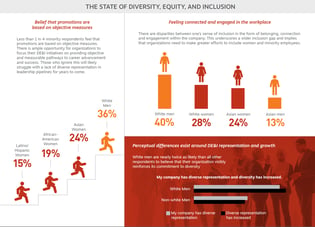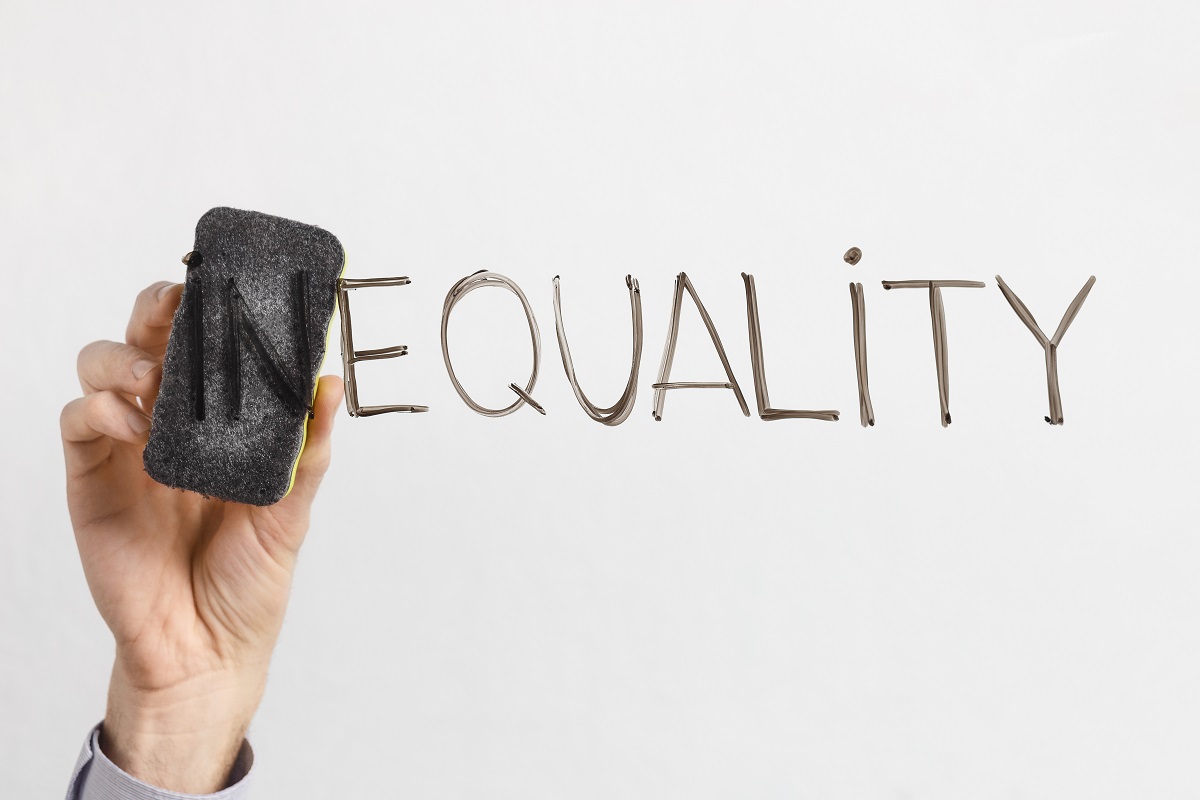Diversity, Equity, and Inclusion - Strategies for Bridging the Disparities
After examining the results of our Vaya Vision survey related to leadership development in a previous blog, it’s time to take a look at the other part of this research focused on Diversity, Equality, and Inclusion (DE&I). Our Vaya Vision survey asked over 1,000 U.S. professionals for their views on DE&I, and their feedback shows that we still have a significant amount of work to do.
The survey revealed significant gaps between the perceptions of different employee groups regarding DE&I in their workplace. Here are some of the highlights:
 Caucasian men are nearly twice as likely as other respondents (including women and minorities) to say that their organization visibly reinforces its commitment to diversity, and that diverse representation has increased.
Caucasian men are nearly twice as likely as other respondents (including women and minorities) to say that their organization visibly reinforces its commitment to diversity, and that diverse representation has increased.- Less than 1 in 4 minority respondents believe that promotions are based on objective measures. In particular, non-Caucasian women feel the most under-recognized for their work, starting with 24% of Asian females. This is followed by African-American women (19%) and Latino/Hispanic women (15%).
- 40% of white men feel connected and engaged at their company compared to 28% of white women, 24% of Asian women, and 13% of Asian men.
Consequences of DE&I Deficiencies
These findings point to how employees tend to perceive their company’s commitment to DE&I initiatives. If the very people (i.e., females and minorities) who need to experience the positive impact of DE&I clearly don’t, several negative implications can follow. For example:
- Having a less diverse team can affect your business performance, with research showing companies with high gender, racial, and ethnic diversity perform better than their less diverse counterparts.
- A deficit of diversity in leadership can have a domino effect, impacting your employees’ sense of recognition, belonging and connectedness across your organization.
- Employees who don’t feel fully included or equally represented will perceive themselves as less valuable to your organization, often leading them to seek employment elsewhere.
- In the long run, ignoring the perceptions and needs of your people today will lead to a shortage of diverse representation in your organization for years to come.
 3 Ways to Cultivate DE&I
3 Ways to Cultivate DE&I
If these results have given you pause for thought, you’re not alone. As the founder of the Vaya Group, I’m deeply committed to guiding organizations to create a diverse and inclusive culture, just as we have done with our own team.
You as a business leader have the power to shape the DE&I vision of your workplace. Here are some ways to bring that to life:
- Use formal assessment processes.
Using an objective and independent assessment for identifying high potential (HiPo) talent is a key way to show that your business is committed to identifying the best person for each role and removing any subjective criteria that may accompany a ‘looks like me’ approach.
- Make employees feel appreciated and valued.
Developing your soft skills as a leader is critical. Take the time to build connections with each and every person on your team. Make sure they know you’re there not only to lead, but to support a culture of positive employee relationships.
- Be a DE&I champion.
Employees now expect business owners to prove they understand the value of a diverse workplace and take responsibility for driving it in the right direction. Take the time to communicate your organization’s progress and commitment to DE&I in the workplace.
The first step towards lasting change is acknowledging that unconscious bias, however unintentional, is a very real problem. Integrating DE&I practices into every level of your organization is vital to the ongoing success your people – and ultimately, your business.
Learn More
For more information on the Vaya Vision survey, please visit www.vayapath.com/vayavision.
For related content, check out the first blog in this series: Bias in Leadership Development is Real – Now What?






